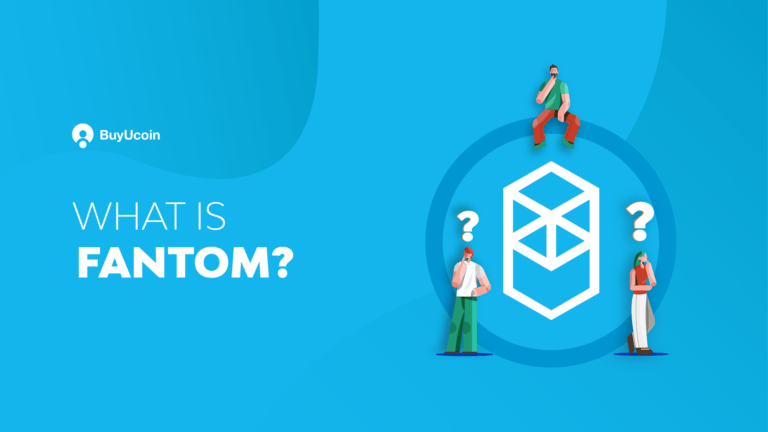Fantom is a decentralized, permissionless, open-source smart contract platform for decentralized apps (dApps) and digital assets, and it’s one of many blockchain networks vying to be Ethereum’s replacement. The Fantom blockchain mainnet launched in December 2019, and its network architecture aims to solve the Blockchain Trilemma by achieving a stable balance of scalability, security, and decentralization.
Like other Ethereum alternatives, Fantom aims to offer more scalability and lower costs than the legacy first-mover smart contract platform in its Ethereum 1.0 incarnation. Users can construct and deploy their independent networks instead of relying entirely on Fantom’s main consensus layer, a unique feature of the Fantom crypto platform.
Each Fantom-based application has its blockchain, and each Fantom dApp benefits from the parent Fantom blockchain’s security, speed, and finality while operating on its blockchain. Furthermore, autonomous blockchains have a modular structure that allows developers to tailor them to their own project needs.
Fantom is best thought of as a parent network of individual child networks that host dApps of all sizes and shapes. Fantom’s infrastructure is linked through an asynchronous Byzantine Fault Tolerant (aBFT) Proof-of-Stake (PoS) consensus method that ensures the network’s operating efficiency. The aBFT network structure is optimized for speed while maintaining network security.
How Does Fantom Work?
The Fantom blockchain is made faster by a directed acyclic graph (DAG), which displays blockchain transaction histories as a “hashgraph”—a graph of blockchain hashes. Hedera Hashgraph uses a similar method.
Fantom’s “leaderless” consensus process, Lachesis, is another breakthrough. Asynchronous Byzantine fault-tolerant proof of stake is the mechanism (aBFT). It can continue to function even if a third of transaction data is fake.
This means that Fantom’s blockchain nodes can independently validate transactions (thus the “asynchronous” in aBFT), rather than needing to wait in a queue. While transactions on Ethereum and Bitcoin can take several minutes to complete, Fantom transactions should only take two seconds.
Fantom, unlike Solana, is Ethereum-compatible (EVM). As a result, it’s simple to migrate Ethereum-based decentralized applications to Fantom. (EVM-compatible coins include Avalanche, Binance Smart Chain (BSC), and Polygon.) To that purpose, FTM is offered as an ERC-20 token and a BEP-20 token, indicating that it complies with the Ethereum and Binance Smart Chain token specifications, respectively.
What Makes Fantom So Unique?
The L1 conflicts provide the finest backdrop for understanding Fantom’s success. Ethereum is now slow and expensive to use and will remain so until the protocol is upgraded (assuming activity remains constant). This may take several years. It’s too late for those who wish to use decentralized finance protocols right now but can’t afford to use ETH native DeFi apps.
Some developers, such as those behind Loopring, Abritrum, and Optimism, choose to construct layer-2 or L2 solutions to speed up the Ethereum experience without jeopardizing the platform’s security.
Ethereum is referred to as the base layer, L1 or layer-1, by other blockchains. The leading horses in this race are Solana, Avalanche, Polkadot, Terra (actually a Cosmos appchain), and Fantom—all native coins have dropped significantly from their all-time highs. Terra’s LUNA currency, with a market cap of $29 billion as of March 2022, is the most valuable of these L1 protocols, followed by Solana, with a market cap of $26 billion. At $3.4 billion, FTM is in second place.
Each blockchain has its DeFi subculture. Terra’s DeFi market is the second largest after Ethereum, according to DeFi Llama data. Ethereum’s total value locked (TVL) is $111 billion, while Terra’s is $22 billion as of March 2022. With $7.25 billion, Fantom is ranked fifth. This is more than the $6.69 billion raised by Solana.
Future of FTM In Upcoming Years
The winner of the L1 conflicts will determine the destiny of FTM. Ethereum is losing ground to new Layer 1 blockchains such as Solana, Fantom, and Avalanche.
Time will tell if the crypto business becomes a winner-take-all market dominated by a single blockchain or if it embraces a multi-chain future where blockchains become application-specific.
However, FTM’s market cap is around seven times lower than SOL’s, suggesting that the winner has already been determined.
The decision of developers Andre Cronje and Anton Nell to leave the DeFi space shocked several decentralized financial projects in March 2022, including Fantom. Cronje was the chair of the Fantom Foundation’s Technology Council from 2018 to 2019 and a technical advisor to the project from 2018 onwards; Nell worked at the Fantom Foundation as a senior solutions architect.
The Fantom Foundation issued a statement underlining that neither were “key developers” of Fantom and claimed that technology development on the project “is proceeding as normal” in the wake of their announcement, with the price of FTM plunging by double digits.
Is FTM Crypto A Good Investment?
We can derive an average 2022 price goal of $1.89 and an average 2025 price objective of $5.19 by combining the Fantom crypto price prediction data from sources, implying possible gains of 62 percent and 347 percent, respectively. The two Fantom price prediction projections for 2030 are $20.71 on average, representing a 17.8-times return on today’s trading price.
Those considering an investment should familiarise themselves with the project’s basics. Fantom and other blockchain networks thrive on developer connections and DApp support. Before putting money down on an investment, you should do a thorough due diligence research, including seeking independent financial advice.
Tokens – FTM, FTM-INR, INR-FTM, USDT-FTM, FTM-USDT













